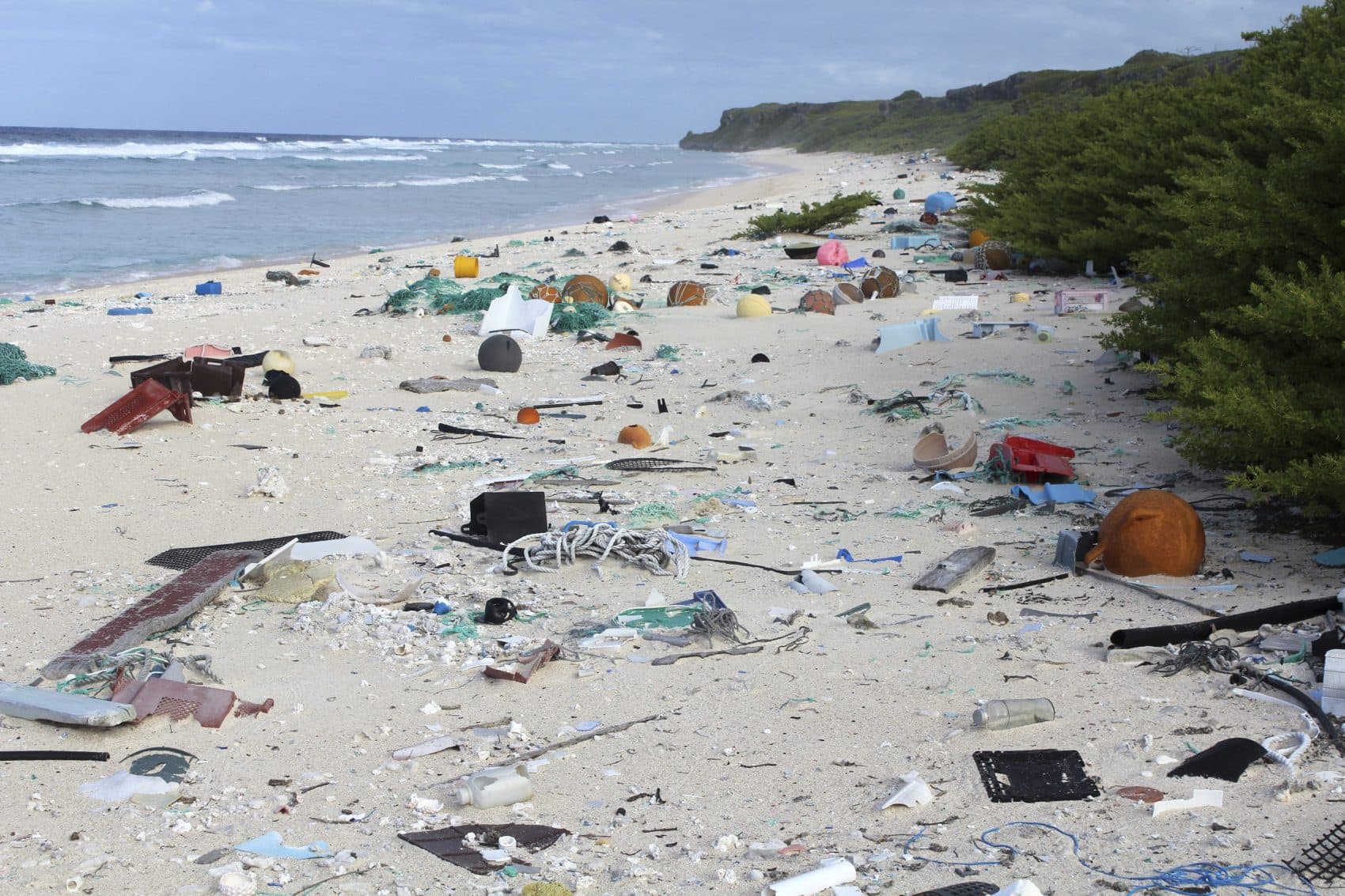Advertisement
How This Remote Island Became Home To Millions Of Pieces Of Trash

Researchers say they have discovered the highest density of trash in the world on a tiny, remote island in the middle of the Pacific Ocean. According to a report this month in The Proceedings of the National Academy of Sciences, an estimated 38 million pieces of trash have washed up on Henderson Island.
How could this happen? Here & Now's Robin Young speaks with Enric Sala (@Enric_Sala), National Geographic explorer-in-residence and marine ecologist. Sala was not involved in this particular study, but has visited the island through his work with the Pristine Seas project.
Interview Highlights
On whether he knew how much trash was on the island prior to a 2012 visit
"Yes, it's difficult not to notice. The whole beach was covered in fishing lines and buoys, flip-flops, plastic bottles. It was atrocious. But, there are other places that have not been reported in the scientific literature that are as bad. There are beaches in Mumbai in India, a beach in Singapore. And all this plastic in the ocean kills hundreds of thousands of sea birds, sea turtles and marine mammals every year."
On the importance of being able to trace trash back to its country of origin
"In this particular study in Henderson, most of the identifiable trash came from China, Japan and Chile, and this clearly shows that trash from all over the world is transported all over the ocean. And we have to think that 80 percent of the trash in the ocean comes from the land."
On how trash winds up in the ocean
"It could be the plastic bag from the supermarket that the wind takes away, or the microfibers that come out when I wash my polar fleece, in my washing machine at home. The ocean is downstream of everything, so all this plastic that doesn't end up on a landfill ends up in the ocean."
"The ocean, actually, instead of thinking of garbage patches or islands, we should think of the ocean as a giant plastic soup."
Enric Sala
On what it's like to walk down the beach
"We were diving around Henderson Island, beautiful place, near pristine. And then you get on your small boat, and you go across the reef, and land on the beach. And you see this vertical wall, 30 meters of limestone with this tropical forest on top, and it's beautiful. But as soon as you look down, you see orange, green, white plastic of all sizes and of all types.
"But the worst part is not what you see, but what you cannot see. Because people have heard about these great garbage patches in the middle of the ocean, and there are areas with a great accumulation of large debris. But most of the plastic in the ocean is microscopic. So the ocean, actually, instead of thinking of garbage patches or islands, we should think of the ocean as a giant plastic soup."
On whether the island acts similar to a bathtub drain
"Yes, so imagine that you had these counterclockwise currents that go all across the Pacific. And think of Henderson as a wall that these currents hit. So all the trash that is transported by the currents ends up washed on those beaches."
On whether he has confidence that the trend can be reversed
"It is going to be very, very difficult to clean up the plastic in the ocean. But we can prevent plastic from getting into the ocean. Businesses have to shift to a circular economy, where there is no waste, where every material is going to be reused into something else. And then the consumer also has a responsibility. For example, I don't use single-use plastic bags, I have my strong canvas bags that I have been using for years. I don't use plastic straws. So if the consumers don't use single-use plastics, we're going to have a big impact in the way things are right now."
This article was originally published on May 22, 2017.
This segment aired on May 22, 2017.